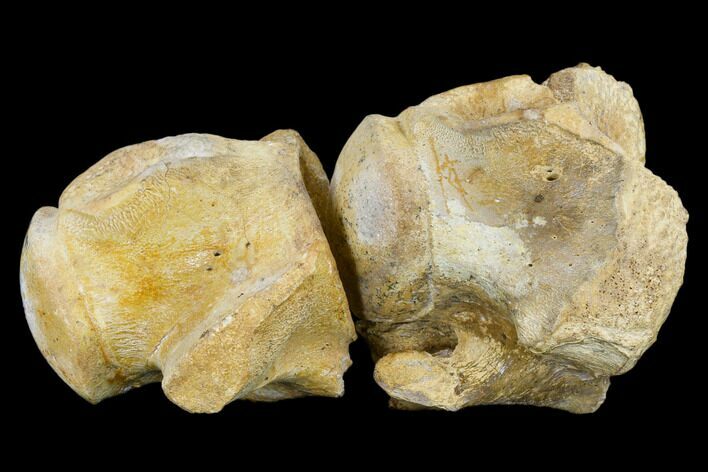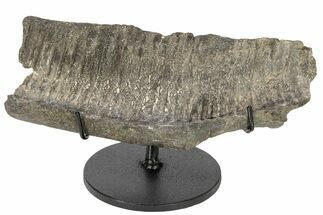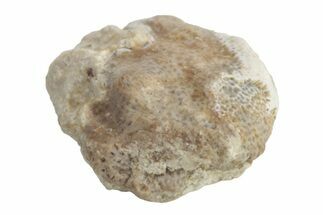This Specimen has been sold.
Mosasaur (Platecarpus) Articulated Atlas And Axis - Kansas
This is the atlas and axis of a Mosasaur (Platecarpus) from the Late Cretaceous, Smoky Hill Chalk, Gove County, Kansas. These are the first two bones of the neck. The Atlas joins to the skull and the axis is the vertebra that engages the atlas. The atlas is 2.8 inches long and the axis, 2.7. The atlas has a repair to on the left side and the axis has bee repaired along the longitudinal axis. Both of these bones came from the same individual and are in very good condition. Note how deep the socket of the axis is and how round the ball is. This is an indication that the vertebra came from a part of the body with a wide range of motion, like the neck. On the atlas, there is only the ball that engages the axis so there is no question where this bone would come from.
Platecarpus is an extinct aquatic lizard belonging to the mosasaur family. Fossils have been found in the United States as well as possible specimens in Belgium and Africa. It reached lengths of up to 14 feet long: half of that length was its tail alone. Platecarpus probably fed on fish, squid, and ammonites. Like other mosasaurs, it was initially thought to have swum in an eel-like fashion, though a recent study suggests that it swam more like modern sharks.
Platecarpus is an extinct aquatic lizard belonging to the mosasaur family. Fossils have been found in the United States as well as possible specimens in Belgium and Africa. It reached lengths of up to 14 feet long: half of that length was its tail alone. Platecarpus probably fed on fish, squid, and ammonites. Like other mosasaurs, it was initially thought to have swum in an eel-like fashion, though a recent study suggests that it swam more like modern sharks.
The Smoky Hill Chalk Member of the Niobrara Chalk formation is a Cretaceous conservation Lagerstätte, or fossil-rich geological formation, known primarily for its exceptionally well-preserved marine reptiles. It outcrops in parts of northwest Kansas--its most famous localities for fossils--and in southeastern Nebraska. Large, well-known fossils excavated from the Smoky Hill Chalk include marine reptiles such as plesiosaurs, large bony fish such as Xiphactinus, mosasaurs, pterosaurs, and turtles.
SPECIES
Platecarpus coryphaeus
LOCATION
Gove County, Kansas
FORMATION
Niobrara Formation
SIZE
2.8 x 3.3" atlas, 2.7" x 2.8 axis, 5.2" total length
CATEGORY
SUB CATEGORY
ITEM
#113781
We guarantee the authenticity of all of our specimens.
 Reviews
Reviews
















